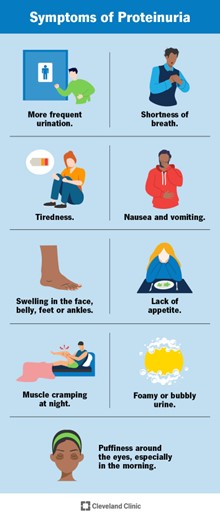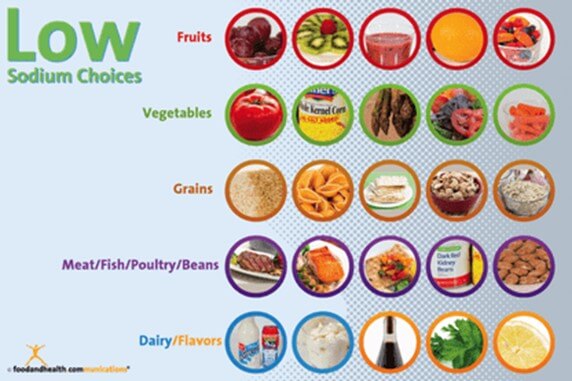Gestational Hypertension > Maternal & Newborn
Exam Review
Comparison with other types of hypertension during pregnancy
Total Questions : 5
Showing 5 questions, Sign in for moreA nurse is reviewing the chart of a client who has gestational hypertension.
Which of the following findings should the nurse expect to see?
Explanation
The correct answer is choice A. Proteinuria of 2+ is a sign of preeclampsia, a serious complication of gestational hypertension that can affect the mother and the fetus.Preeclampsia is diagnosed by high blood pressure and protein in the urine after 20 weeks of pregnancy.
Choice B is wrong because gestational hypertension usually begins after 20 weeks of pregnancy, not before.
Choice C is wrong because blood pressure of 150/95 mmHg is not enough to diagnose gestational hypertension.The blood pressure must be greater than or equal to 140/90 mmHg on two occasions at least four hours apart.
Choice D is wrong because gestational hypertension does not resolve within 48 hours postpartum.It may last up to 12 weeks after delivery.

A nurse is caring for a client who has chronic hypertension and is pregnant.
The nurse should monitor the client for which of the following complications?
Explanation
The correct answer is choice A. Superimposed preeclampsia.This is a condition where a woman with chronic hypertension develops preeclampsia during pregnancy.Preeclampsia is a complication of pregnancy that involves high blood pressure, protein in the urine, and organ damage.
Choice B.Eclampsia is wrong because it is a severe form of preeclampsia that causes seizures and coma.
It is not a complication of chronic hypertension alone.
Choice C.HELLP syndrome is wrong because it is a life-threatening complication of preeclampsia that involves hemolysis, elevated liver enzymes, and low platelets.
It is not specific to chronic hypertension.
Choice D.Placenta previa is wrong because it is a condition where the placenta covers the cervix and causes bleeding during pregnancy or delivery.
It is not related to chronic hypertension or preeclampsia.
A nurse is teaching a group of pregnant clients about preeclampsia.
Which of the following statements by a client indicates a need for further teaching?
Explanation
The correct answer is choice D.Increasing salt intake to prevent fluid retention is a wrong statement because salt can worsen fluid retention and increase blood pressure, which are both signs of preeclampsia.People with preeclampsia should follow a low-salt diet and drink plenty of fluids.
Choice A is correct because changes in vision, such as blurriness, light sensitivity or dark spots, can indicate brain trouble due to preeclampsia.People with preeclampsia should report any vision changes to their provider as soon as possible.
Choice B is correct because aspirin and ibuprofen are nonsteroidal anti-inflammatory drugs (NSAIDs) that can increase blood pressure and affect kidney function, which are both complications of preeclampsia.People with preeclampsia should avoid taking NSAIDs during pregnancy unless prescribed by their provider.
Choice C is correct because lying on the left side can help lower blood pressure and improve blood flow to the placenta, which can benefit both the mother and the baby in preeclampsia.People with preeclampsia should lie on their left side if they have a headache or other symptoms.

A nurse is assessing a client who has eclampsia and is receiving magnesium sulfate IV.
Which of the following findings should alert the nurse to possible magnesium toxicity?
Explanation
The correct answer is choice A.Respiratory rate of 10 breaths/min is a sign ofmagnesium toxicity, which can occur in clients receiving magnesium sulfate IV for eclampsia.
The nurse should stop the infusion and notify the provider immediately.
Choice B is wrong because urine output of 40 mL/hr is within the normal range and does not indicate magnesium toxicity.
Choice C is wrong because deep tendon reflexes of 2+ are normal and do not indicate magnesium toxicity.
Diminished or absent deep tendon reflexes are a sign of magnesium toxicity.
Choice D is wrong because serum magnesium level of 6 mg/dL is within the normal range and does not indicate magnesium toxicity.The normal range for serum magnesium level is 1.7 to 2.3 mg/dL.
A nurse is providing discharge instructions to a client who had gestational hypertension and delivered a healthy newborn.
Which of the following statements should the nurse include in the teaching?
Explanation
The correct answer is choice C. The nurse should include in the teaching that the client should report any blurred vision or abdominal pain to their provider.These are signs of severe preeclampsia, which can occur after delivery and can lead to serious complications such as eclampsia, stroke, or liver rupture.
Choice A is wrong because the client should have their blood pressure checked again within 7 to 10 days after delivery, and then again at 6 weeks postpartum.
Six months is too long to wait for a follow-up.
Choice B is wrong because the client can breastfeed safely even if they have high blood pressure or are taking antihypertensive medications.Breastfeeding has many benefits for both the mother and the baby, and most antihypertensive drugs are compatible with breastfeeding.
Choice D is wrong because oral contraceptives are not recommended for women who have had gestational hypertension or preeclampsia, especially if they have other risk factors such as obesity, smoking, or thrombophilia.Oral contraceptives can increase the risk of thromboembolic events and hypertension in these women.Non-hormonal or progestogen-only methods of contraception are preferred.

Sign Up or Login to view all the 5 Questions on this Exam
Join over 100,000+ nursing students using Nursingprepexams’s science-backend flashcards, practice tests and expert solutions to improve their grades and reach their goals.
Sign Up Now

